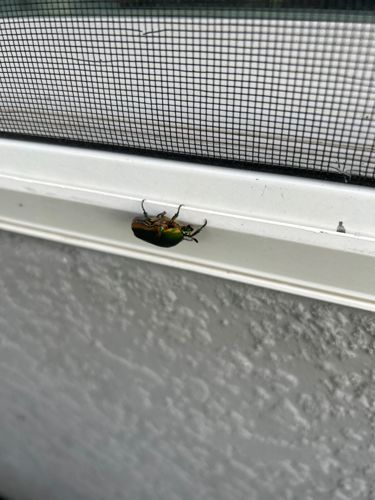Japanese Beetle
Scientific Name: Popillia japonica
Order & Family: Order: Coleoptera, Family: Scarabaeidae
Size: Adults are typically 10-15 mm (0.4-0.6 inches) long.

Natural Habitat
Adults are found in gardens, agricultural fields, orchards, nurseries, and urban landscapes where their host plants are present. Larvae live in various soil types, particularly turf areas like lawns, golf courses, and pastures.
Diet & Feeding
Adult Japanese Beetles are polyphagous, feeding on the leaves, flowers, and fruits of over 300 species of plants, including roses, grapes, beans, corn, and trees. Larvae (grubs) primarily feed on the roots of grasses, including turfgrasses.
Behavior Patterns
Adult Japanese Beetles are very active during the day, feeding on plants and flying. They are known for forming large aggregations on preferred host plants. Larvae (grubs) live in the soil and feed on grass roots. Females lay eggs in the soil, usually in turf areas.
Risks & Benefits
Potential Risks: Japanese Beetles are significant agricultural and horticultural pests. Adults cause widespread defoliation and flower damage to a wide range of plants, impacting crop yields and ornamental value. Larvae damage turf by feeding on roots, leading to dead patches in lawns. Potential Benefits: While primarily considered a pest, like all insects, they play a role in the food chain as a food source for birds and other predators.
Identified on: 8/14/2025